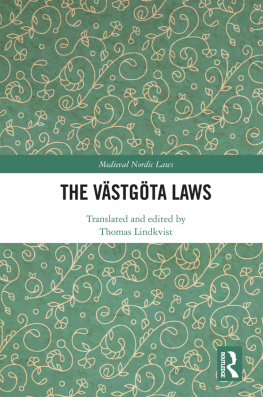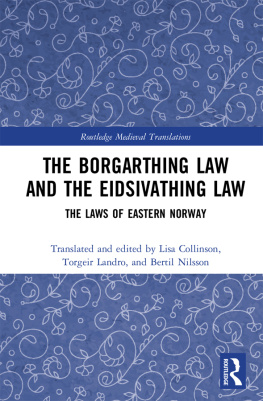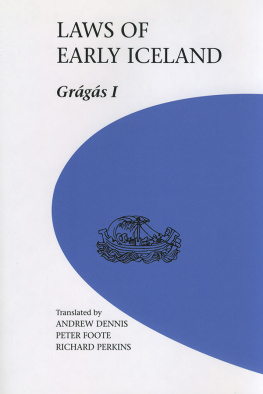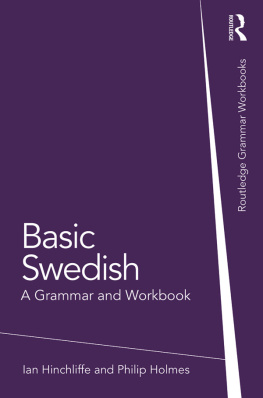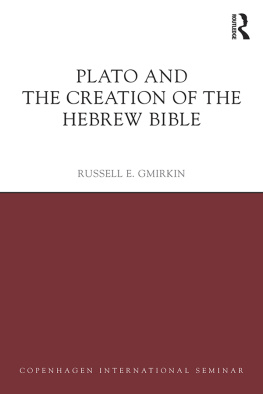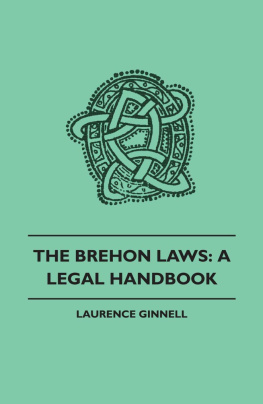The Vstgta Laws
The Vstgta Laws contains the translation of the oldest of the Swedish provincial law codes and other texts of great relevance to the legal history.
The first version, the Older Vstgta Law, is from the first half of the thirteenth century and the earliest example of an indigenous vernacular literacy with the Latin script from Sweden. A second and highly revised version of the law is preserved in a manuscript from the middle of the fourteenth century. This volume also contains a translation of the annotations and proposals made during the complicated negotiations between representatives of the church, the kingdom and the community of the province. Together, the two versions of the law and the annotations offer a unique possibility to understand the making and transformation of a medieval law. The importance of the regional leaders, the lawmen, is evident from the earliest example of history writing in Sweden, illustrating the legal and political history of Vstergtland.
With an introduction that places the province of Vstergtland and its law into its political setting, this translation is invaluable for all students and scholars of medieval Swedish legal and political history.
Thomas Lindkvist is Professor Emeritus of Medieval History at the University of Gothenburg. His recent publications include the conference paper Iron and the Medieval Modernisation of Sweden (2020) and (as editor with Kristian Kristiansen and Janken Myrdal) Trade and Civilization: Economic Networks and Cultural Ties, from Prehistory to the Early Modern Era (2018).
Medieval Nordic Laws
Series editors: Stefan Brink and Ditlev Tamm
Medieval Nordic Laws, edited by Stefan Brink and Ditlev Tamm, is part of the Routledge Medieval Translations series. These translations are the first translations into English of the earliest laws of Scandinavia, and are some of the earliest written sources for Scandinavia. These translated laws emanate from an international project of the same name and have never before been introduced to an international audience.
Guta Lag and Guta Saga
The law and history of the Gotlanders
Christine Peel
The Danish Medieval Laws
The laws of Scania, Zealand and Jutland
Ditlev Tamm and Helle Vogt
The Liber legis Scaniae
The Latin Text with Introduction, Translation and Commentaries
Ditlev Tamm
The Borgarthing Law and the Eidsivathing Law
The Laws of Eastern Norway
Lisa Collinson, Torgeir Landro, and Bertil Nilsson
The Older Gulathing Law
Erik Simensen
The Vstgta Laws
Thomas Lindkvist
First published 2021
by Routledge
2 Park Square, Milton Park, Abingdon, Oxon OX14 4RN
and by Routledge
605 Third Avenue, New York, NY 10158
Routledge is an imprint of the Taylor & Francis Group, an informa business
2021 Thomas Lindkvist
The right of Thomas Lindkvist to be identified as the author of the editorial material, and of the authors for their individual chapters, has been asserted in accordance with sections 77 and 78 of the Copyright, Designs and Patents Act 1988.
All rights reserved. No part of this book may be reprinted or reproduced or utilised in any form or by any electronic, mechanical, or other means, now known or hereafter invented, including photocopying and recording, or in any information storage or retrieval system, without permission in writing from the publishers.
Trademark notice: Product or corporate names may be trademarks or registered trademarks, and are used only for identification and explanation without intent to infringe.
British Library Cataloguing-in-Publication Data
A catalogue record for this book is available from the British Library
Library of Congress Cataloging-in-Publication Data
Names: Lindkvist, Thomas, 1949 translator, editor.
Title: The Vastgota laws / translated and edited Thomas Lindkvist.
Description: Milton Park, Abingdon, Oxon ; New York, NY : Routledge, 2021. | Series: Routledge medieval translations | Includes bibliographical references and index. | Contents: Introduction The older Vastgota Law The younger Vastgota Law The younger Vastgota Law. The additamenta The Vastgota Law : Laurentius book The lists of lawmen, kings and bishops Ordinance of Bishop Brynolf 1281.
Identifiers: LCCN 2021004475 | ISBN 9781032004884 (hardback) | ISBN 9781032004921 (paperback) | ISBN 9781003174370 (ebook)
Subjects: LCSH: LawSwedenHistoryTo 1500Sources. | Customary lawSwedenVastergotlandHistoryTo 1500Sources.
Classification: LCC KKV129 .V375 2021 | DDC 349.48509/022dc23
LC record available at https://lccn.loc.gov/2021004475
ISBN: 978-1-032-00488-4 (hbk)
ISBN: 978-1-032-00492-1 (pbk)
ISBN: 978-1-003-17437-0 (ebk)
Typeset in Times New Roman
by Apex CoVantage, LLC
The oldest laws of the Nordic countries are written in the vernacular. The earliest manuscripts stem from the thirteenth century and are younger than the texts of the laws which for some of the laws date back into the twelfth century. They are, of course, important in Nordic Law and Legal History, but they are equally significant for different branches of history, being the oldest written sources we have in the Nordic countries of the society at that time, dealing with the household and social, sometimes administrative and ecclesiastical and agrarian matters, and also for philology, being some of oldest written documents we have in the vernacular.
These laws for a long time were intensely studied by legal historians as the foundation of national law. During the last decade there has been a revival in the interest in these early laws in the Nordic countries, manifested in, for example, an influential conference series in early law at the Carlsberg Academy in Denmark, and an initiative of an interdisciplinary network project, called Medieval Nordic Laws (MNL), funded by The Leverhulme Trust and based at the University of Aberdeen, and also some other local initiatives. In order to open up the floodgates for also an international interest and research on these laws and to facilitate comparison, it was decided in the MNL project to translate the laws into English. Besides the obvious scoop of an international interest in the laws based on new translations, another gain with this initiative was the rethinking of the position of the laws in connection with the redaction of new introductions to the laws. The Nordic Medieval Laws were earlier subjected to thorough analysis from both legal and historical points of view and they have been translated into modern Nordic languages. This happened mainly in the 1930s and 40s but the laws have long played a central role in Nordic legal history. In the second part of the nineteenth century the Nordic laws were seen in German scholarship as important expressions of the so-called Germanenrechte, and intense learning was used in developing and describing a specific Nordic variant of such law. This approach was never fully accepted in the Nordic countries and a more critical study of the laws based on the idea that they reflected both older and newer layers of law started already in the 1920s, and has continued up to the 1980s in Scandinavia. Todays legal historians in the Nordic countries tend to see the laws in a European context and generally as new law written down as such. Most of the Nordic scholarship, however, was only published in Nordic languages. Research into the Medieval legal world has continued in later years and a translation and introductions in English will thus also make the newest research accessible to an international public. Iceland holds a somewhat different position and has already seen two of the old law codes, the


